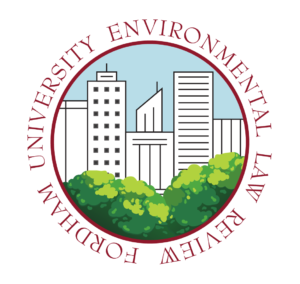New York City Will Be Ahead of The Curve with Congestion Pricing
Congestion pricing is a controversial idea within United States public policy circles, but in major cities around the world (like London and Stockholm), it is a widely accepted practice designed to reduce traffic and pollution. Congestion Pricing is not common in the United States because of the country’s widespread car ownership and dominant car culture. This was true, however, until New York — home to the country’s most populous and dense city — bucked the trend two years ago when it approved a congestion pricing measure for New York City that is set to be implemented in 2023. While Congestion pricing might not seem like an ideal environmental law measure, the clear benefits that reducing traffic congestion in New York City would have (on top of the increased revenue earmarked for the Metro Transit Authority (the MTA)) make it exactly that.
Unfortunately, congestion pricing has its detractors, the largest being car advocates and business owners unable to take public transit to work. Fortunately, congestion pricing is undeniably a great policy measure for environmental sustainability. The US Department of Transportation’s Federal Highway Administration (FHA) notes that congestion pricing laws “reduce vehicle miles traveled, thereby reducing fuel consumed and pollutant emissions.” Additionally, the FHA report mentions how congestion pricing improves the general quality of life by making streets safer for pedestrians. These laws also ease stop-and-go traffic, reducing fuel consumed and emissions generated by constant accelerations and decelerations. Congestion pricing in London, Singapore, and other major cities has significantly reduced particulate matter emissions, fossil fuel consumption, and carbon dioxide emissions by upwards of 20 percent, depending on the city and specific measures implemented. There are also anecdotal studies of congestion pricing affecting certain major events — like the 1996 Summer Olympics in Atlanta — by reducing asthma-related hospitalizations.
Of course, like with all public policy ideas, congestion pricing — even in New York, where it becomes law in 2023 — is not without its potential problems. The biggest is a proposed fee, called a congestion surcharge, that will be levied on all vehicles traveling into or within the central business district in Manhattan. The fees can range anywhere from $5 to $23, depending on the time of day. The main victims of this fee (not including the drivers of the vehicles) are the business owners in the central business district who are concerned that the fee will discourage travel from outside of Manhattan, therefore affecting their bottom line.
Fortunately, the overall benefits are significant. First, the extra revenue garnered from congestion pricing could help bring the MTA out of debt, providing much-needed funds for overall system improvements. Second, improved air quality resulting from fewer cars being on the roads of Manhattan could lower the expected 3,000 premature deaths annually resulting from over-exposure to dangerous air particulates. Third, the reduced desirability of driving into the city could help improve bus and subway ridership, which has been drastically cut since the onset of the pandemic in March 2020. For example, in Singapore, “[b]us ridership increased [by] about 20 percent due to congestion charging, transit improvements, and related policies.” The benefits of congestion pricing are significant, and the biggest problem (the surcharge) is outweighed by the amount of funding it will provide for public transportation.
Congestion Pricing is essentially a self-fulfilling idea. With congestion pricing in place, fewer cars will be on the road in New York City, and local air pollution will decrease as the quality of life improves. As this happens, more funding will be diverted directly to the MTA to improve the subways, buses, and ferries that people who previously relied on cars to navigate the city will have to turn to. Following these significant transit improvements, people who continued to drive despite the congestion charges might turn to transit and ditch their cars, perpetuating the cycle even further. Congestion Pricing feels like a slam dunk; even considering potential short-term rough patches, it is certainly a win for New York and could serve as a model for other cities in the future.

